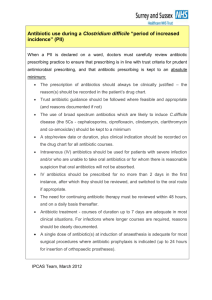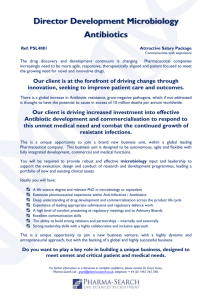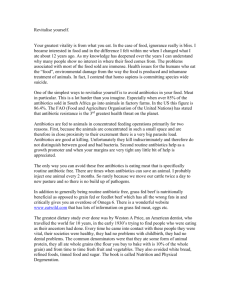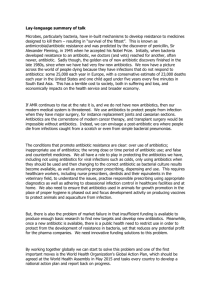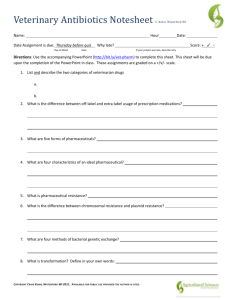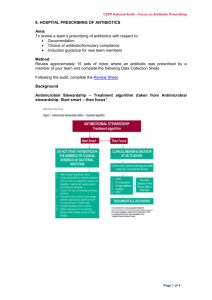ANTIBIOTIC-AWARENESS-WEEK-2015-QUIZ
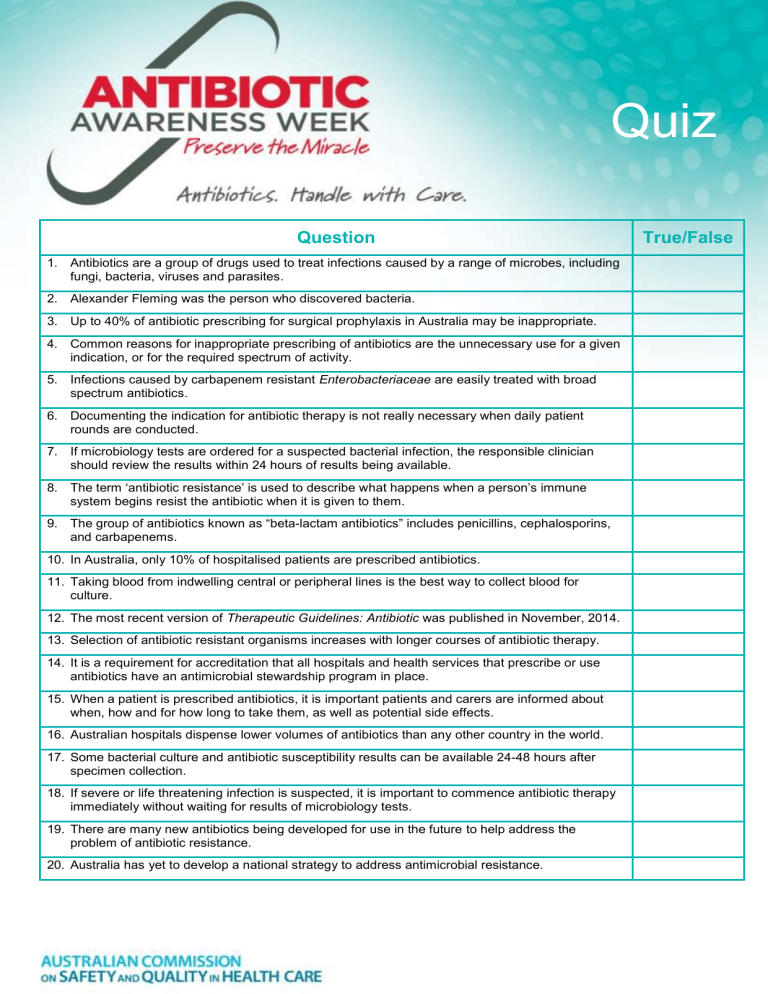
Quiz
Question
1. Antibiotics are a group of drugs used to treat infections caused by a range of microbes, including fungi, bacteria, viruses and parasites.
2. Alexander Fleming was the person who discovered bacteria.
3. Up to 40% of antibiotic prescribing for surgical prophylaxis in Australia may be inappropriate.
4. Common reasons for inappropriate prescribing of antibiotics are the unnecessary use for a given indication, or for the required spectrum of activity.
5. Infections caused by carbapenem resistant Enterobacteriaceae are easily treated with broad spectrum antibiotics.
6. Documenting the indication for antibiotic therapy is not really necessary when daily patient rounds are conducted.
7. If microbiology tests are ordered for a suspected bacterial infection, the responsible clinician should review the results within 24 hours of results being available.
8. The term ‘antibiotic resistance’ is used to describe what happens when a person’s immune system begins resist the antibiotic when it is given to them.
9. The group of antibiotics known as “beta-lactam antibiotics” includes penicillins, cephalosporins, and carbapenems.
10. In Australia, only 10% of hospitalised patients are prescribed antibiotics.
11. Taking blood from indwelling central or peripheral lines is the best way to collect blood for culture.
12. The most recent version of Therapeutic Guidelines: Antibiotic was published in November, 2014.
13. Selection of antibiotic resistant organisms increases with longer courses of antibiotic therapy.
14. It is a requirement for accreditation that all hospitals and health services that prescribe or use antibiotics have an antimicrobial stewardship program in place.
15. When a patient is prescribed antibiotics, it is important patients and carers are informed about when, how and for how long to take them, as well as potential side effects.
16. Australian hospitals dispense lower volumes of antibiotics than any other country in the world.
17. Some bacterial culture and antibiotic susceptibility results can be available 24-48 hours after specimen collection.
18. If severe or life threatening infection is suspected, it is important to commence antibiotic therapy immediately without waiting for results of microbiology tests.
19. There are many new antibiotics being developed for use in the future to help address the problem of antibiotic resistance.
20. Australia has yet to develop a national strategy to address antimicrobial resistance.



